使用参数数学
在考察动力学数据过程中常常要来定义一个比值。这个比值可能是两个染料之间的比值,也可能是同一个染料在两个不同发射波长上的比值。FCS Express的参数数学功能,可以让用户在分析中定义从简单比率到复杂公式的各种不同的数学操作。FCS Express将可以计算和显示实际的比值,而非一些其它软件中用到的人为定义的成倍整数。
在这节中,我们将学习如何创建在动力学绘图中使用的参数数学公式。
在本教程学习过程中,用户可以使用自己的数据,也可以使用本教程提供的样本数据。样本数据文位置在Tutorial Sample Data archive(教程样本数据库)中。包括KineticsTutorial.fey,kinetics10.010和kinetics25.025已经被嵌入,且将在本章节中使用。
| 1. | 选择File(文件)标签→Open Layout。 |
| 2. | 在导入版面对话框中选择位于Tutorial Sample Data archive(教程样本数据库)下的KineticsTutorial.fey。 |
在KineticsTutorial.fey版面中的2个样本(kinetics10.010和kinetics25.025)已经做为动力学绘图展示了。
以下将展示如何打开转换窗口和创建一个新的参数数学转换:
| 3. | 请通过选择Tools(工具)标签→Transformations →Transformation(转换)命令来打开命令窗口 |
| 4. | 在transformation(转换) 对话框中 |
| 5. | 在下拉菜单中点击Parameter Math(参数数学) |

Figure T21.1 Selecting the Parameter Math transformation.
在Transformation(转换)窗口的上半部分将会有一个New Parameter Math(新的参数数学)被创建。如图T21.2所示,在Transformation(转换)窗口下半部分会出现一个Parameter Math(参数数学)对话框。注意:在这个例子中,kinetics10.010样本做为模板文件而被自动选择,可以通过点击Template File field(模板文件区域)选项右边的省略号![]() 来更改文件。
来更改文件。
| 6. | 如图所示(图T21.2)所示,在Parameter Math(参数数学)对话框中选择New(新建)来定义一个新的公式。 |
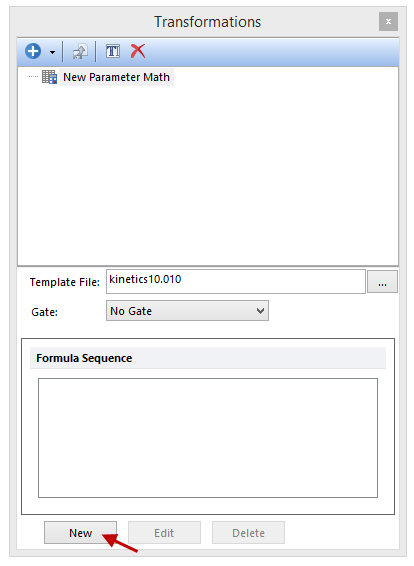
T21.2 The New Parameter Math dialog as it appear in the Transformation window after Step 5.
一个类似于图T21.3中的Create New Sequence Item(创建新序列项目)窗口将会被打开。
以下步骤均针对图T21.3。
| 5. | 在Output Parameter Name(输出参数名字)复选框中输入Ca++ Ratio(Ca++比率) |
| 6. | 将First Input Parameter(第一个输入参数)改为Fluo 3 |
| 7. | 请更改数学运算符为“/”,来进行除法运算 |
| 8. | 将Second Input Parameter(第二个输入参数)改为Fura Red |
| 9. | 点击OK |
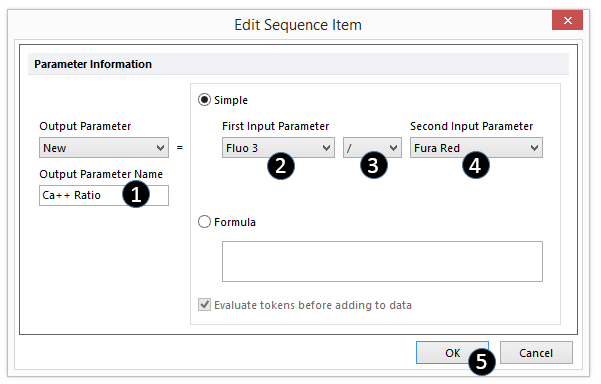
Figure T21.3 Defining a Parameter Math Sequence Item Formula
在Transformation(转换)窗口下Parameter Math(参数数学)对话框中将显示我们定义的公式序列(图T21.4)。注意:在本例中,新的参数数学转换只包括Ca++ Ratio(Ca++比率)公式,然而它可以包含更多的公式。

Figure T21.4 Parameter Math Sequence Dialog with Formula Displayed
现在,参数数学转换可以被自定义并且应用于绘图的展示和分析。
接下来,我们将把新的参数数学转换(包括Ca++ 比例公式)应用到版面中的柱状图中。
请注意,新的参数数学转换在模板文件kinetics25.025中创建。kinetics10.010样本中有同样的参数,我们也可以应用一个New Parameter Math(新的参数数学)转换。
| 10. | 在转换窗口中左击并按住New Parameter Math(新的参数数学)。 |
| 11. | 将New Parameter Math(新的参数数学)从转化窗口中拉出,并释放到一维图的上方(图T21.5)。 |
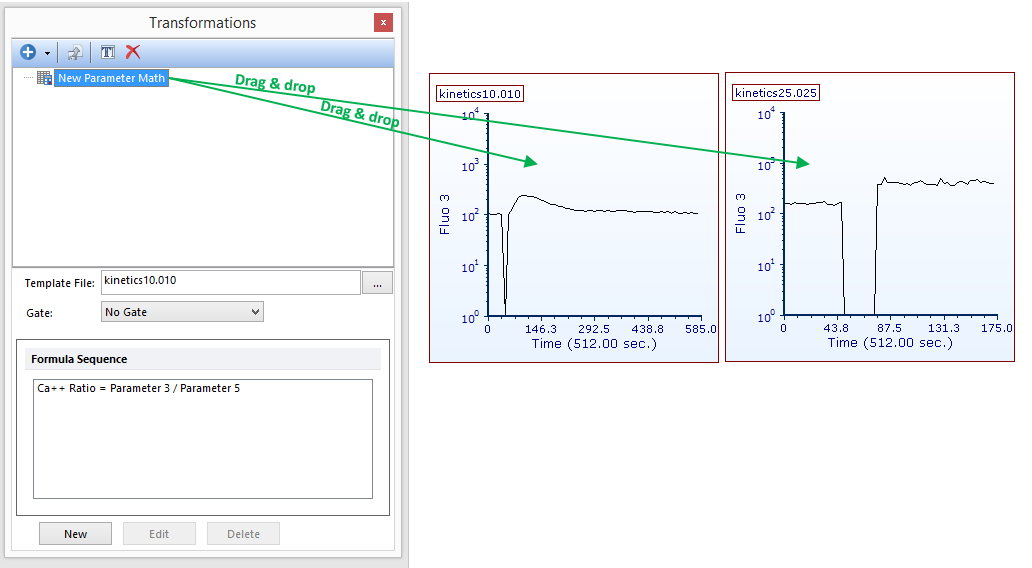
Figure T21.5. Use Darg&Drop to apply the Parameter Math transformation to the plots of the layout.
现在,2个一维图看起来像图T21.5b中显示那样。注意:绘图的标题自动添加上Parameter Math applied(参数数学已应用)后缀。
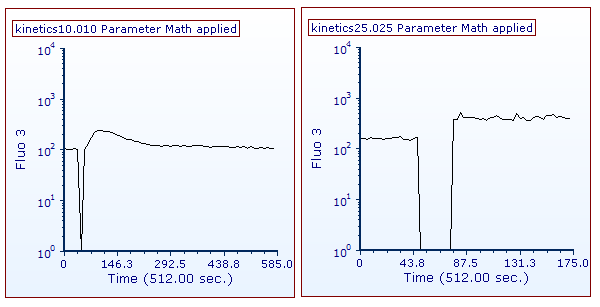
Figure T21.5b The two kinetics plot as they appear when the New Parameter Math transformation has been applied to them.
现在,新的Ca++ Ratio(Ca++比率)公式可以作为轴标签上的一个标准的参数。
我们将通过格式窗口将Ca++ Ratio(Ca++比率)参数同时展示到2个一维图的的Y轴上。
| 12. | 请按下CTRL+A,将这两个绘图选中。 |
| 13. | 选择Format(格式) → Plot Option(绘图选项) → Overlay(叠加图层)命令。 |
| 14. | 在下拉菜单中将Y Parameter(Y参数)改成Ca++ Ratio(Ca++比率)(在New Parameter Math(新的参数数学)转换窗口中定义的公式)(图T21.6)。 |
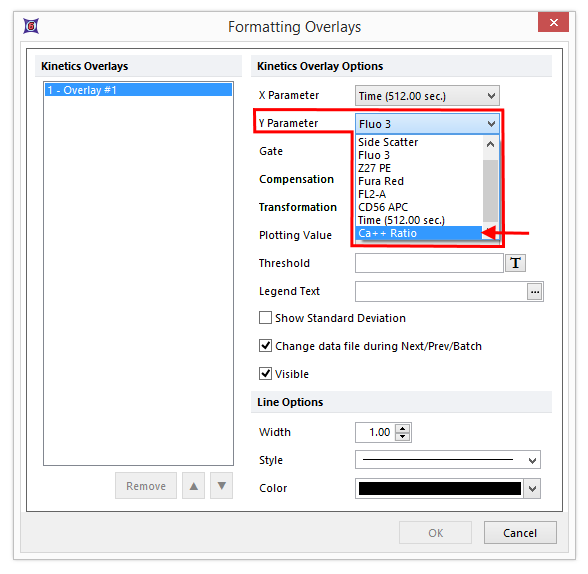
Figure T21.6 Changing the Y Axis to the Ratio Defined by the Parameter Math
版面上的绘图现在应该看起来如图T22.7所示。因为参数数学计算的第一个参数是对数参数,FCS Express会假定新创建的参数也应该是一个对数参数。这是通常情况,但在本例子中并非如此。因为绘图显示实际的比率数值,我们需要通过调整数值设置来在线性坐标系中显示数据。
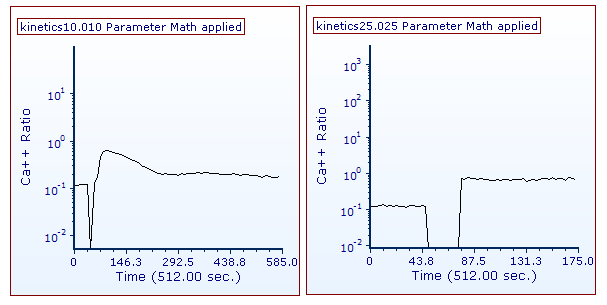
Figure T21.7 Ca++ Ratio vs Time
| 15. | 请按下CTRL+A ,将这两个绘图选中。 |
| 16. | 选择Format(格式)→Plot Options(绘图选项)→Axes(坐标轴)命令。 |
以下步骤均针对图T21.8。
| 17. | 请在选择坐标轴部分,选择Y Axis(Y轴) |
| 18. | 请在Scale(缩放)部分,不要勾选Automatic(自动) |
| 19. | 请把Scale(坐标轴)改成Linear(线性函数) |
| 20. | 请在Range(范围)部分,不要勾选Automatic(自动) |
| 21. | 在Minimum(最小值)中,请输入0 |
| 22. | 在Maximum(最大值)中,请输入1 |
| 23. | 点击OK |
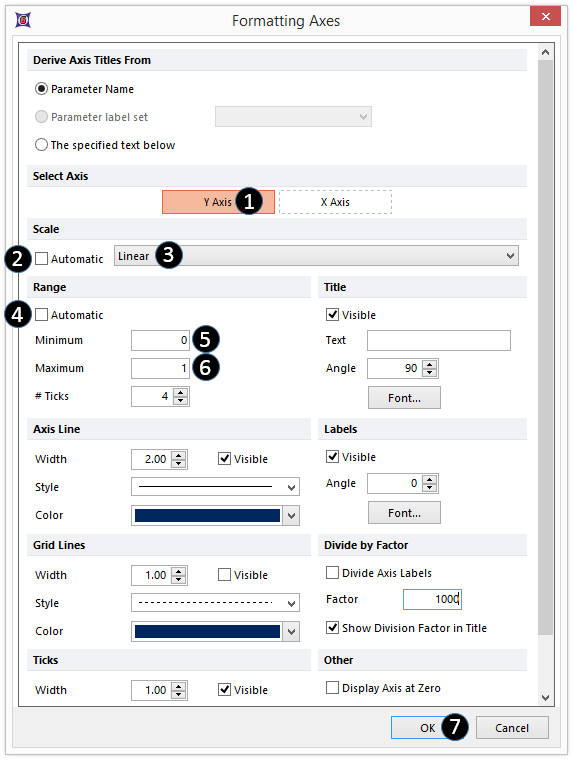
Figure T21.8 Formatting Axes Dialog
这时版面中的绘图应该看起来如图T21.9所示。
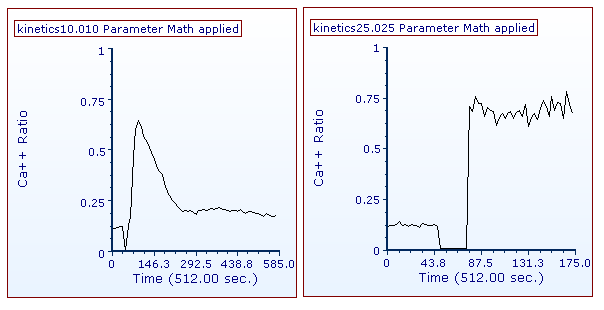
Figure T21.9 Plots Scaled Correctly to Display the Ca++ Ratio
